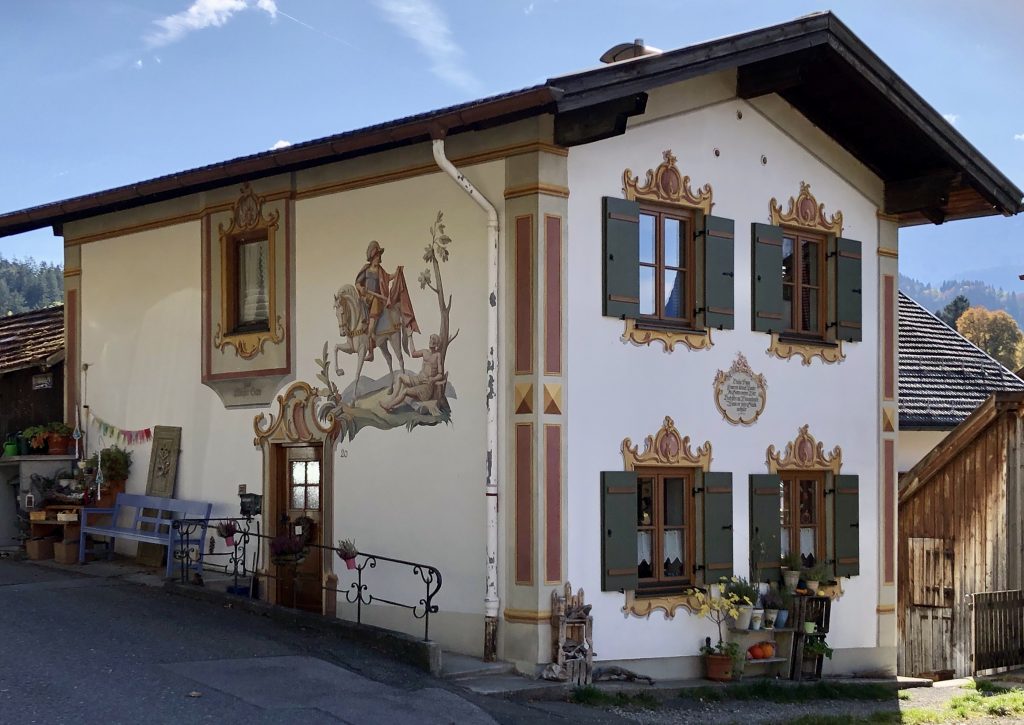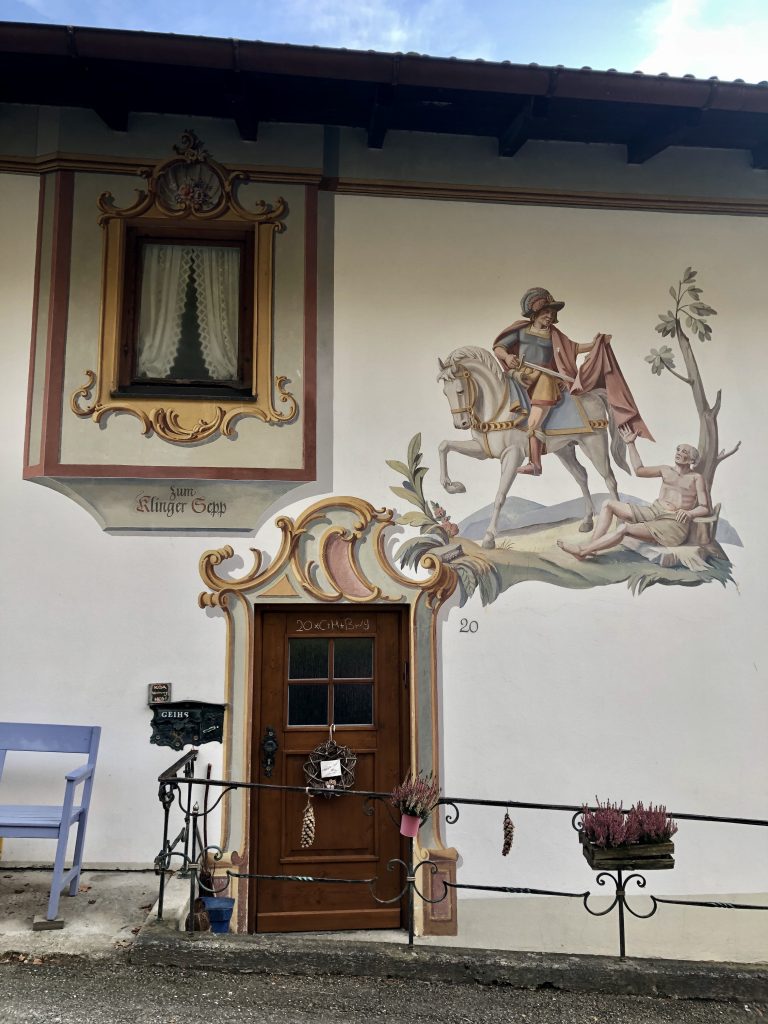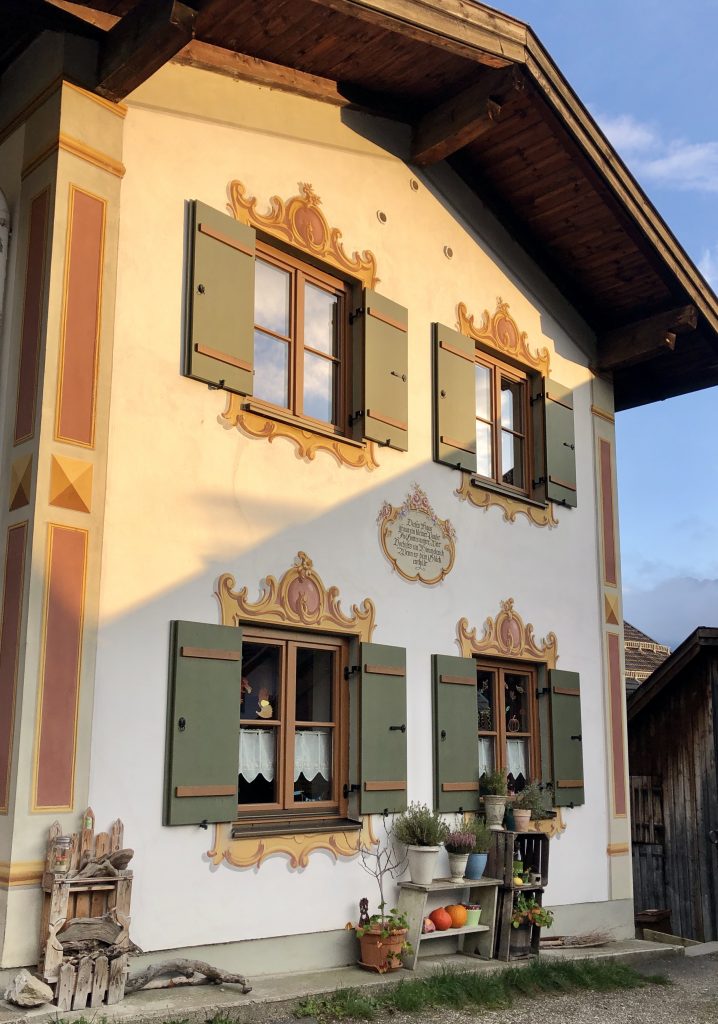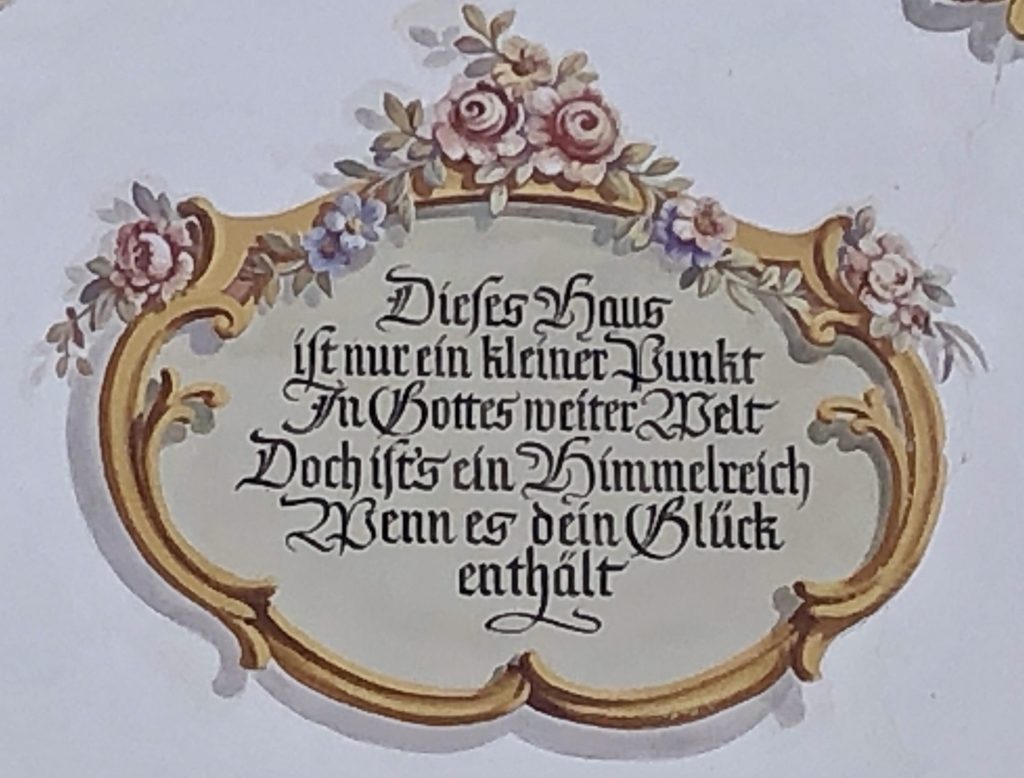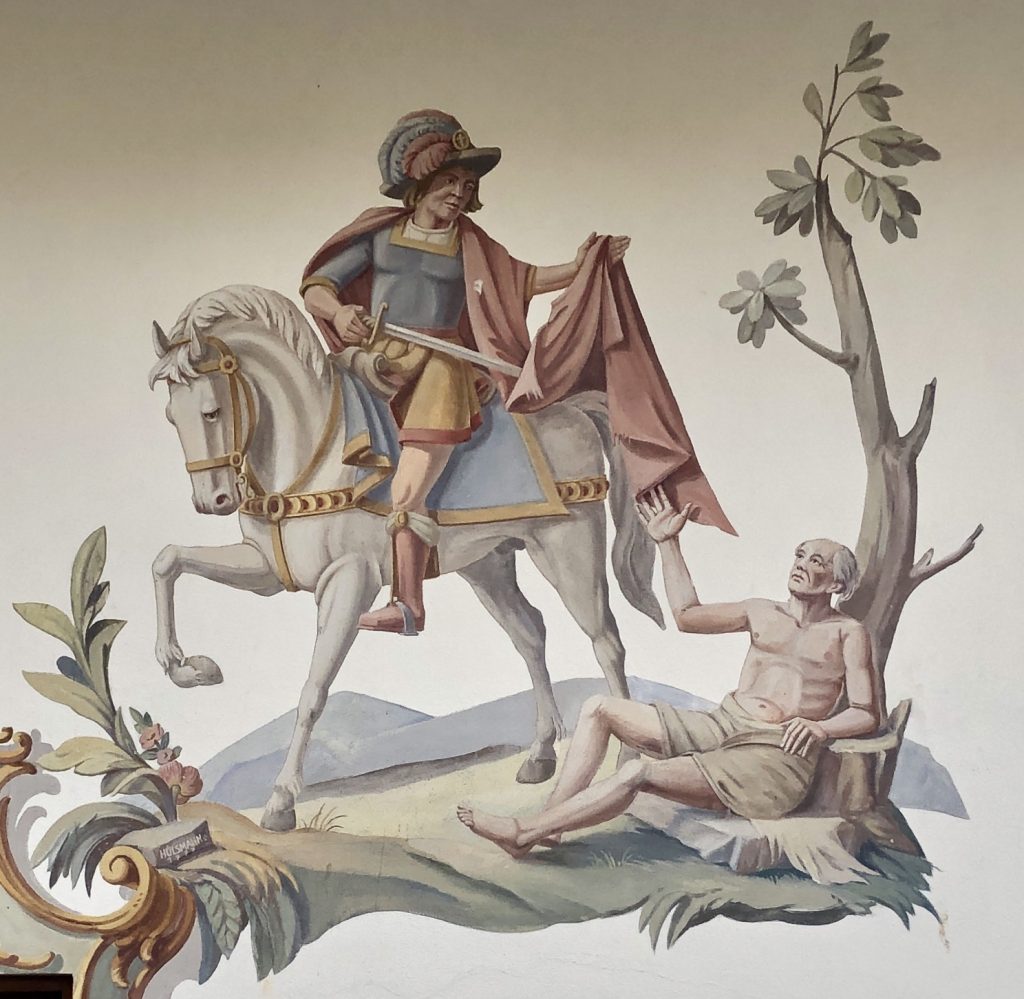St.-Anton-Straße
Saint Anthony Street is named for the pilgrimage church of Saint Anthony — or Saint “Anton” in German.
The pilgrimage church of Saint Anton is a landmark of Partenkirchen. During the War of the Spanish Succession, four citizens vowed to build the church in 1703 if the place was spared by the troops of Max Emanuel and the Tyroleans. With the exception of neighborhood readings to the Bavarian and imperial troops, Partenkirchen got off lightly. A votive tablet shows what is happening. As a thank you, the founders Christoph Perwein, Elias Gröber, Johann Schmauntz and Jakob Lidl built a small octagon chapel, which was inaugurated in 1708. Pastor Matthias Samweber then had the pilgrimage chapel converted into a church in 1734-1736 by Josef Schmuzer from Wessobrunn, who had previously built the parish church in Garmisch. The painter Johann Evangelist Holzer created the frescoes. The ceiling fresco is considered the most beautiful and most valuable of the 18th century in the Bavarian region. It is the first dome painting and the only one that has been preserved by the then 26-year-old South Tyrolean painter Johann Evangelist Holzer. Around St. Antonius, the great advocate, he grouped 1010 figures, mostly sufferers and supplicants.
Built in 1704 by Josef Schmutzer, the ceiling was originally painted by the artist Johann Evangelist Holzer in the 1730s.
While working on these murals, Holzer — a then 31 year-old fresco artist from Burgeis in South Tyrol — stayed at the”Wörndle-Haus” on Heuschütt, just down the hill from the church. Before he left Partenkirchen, as a thank you to his hosts, he painted a lüftlmalerei of Saint Mary on the front of their house in 1739 — which remains the oldest lüftlmalerei in town to this day.
There was a Latin school in the priest’s house from 1823-72.
From the second half of the 19th century, the site was a gingerbread bakery and wax seller. You could get coffee, chocolate, tea, beer, wine cake, gingerbread, baked goods, and homemade sweets here.
In the mid-1920s, Professor Wackerle bought the property and built the house currently attached to the church in 1926. He lived in this home until his death in 1959.
Today, on the walls on the outside the church of Saint Anthony, one can see a sundial of the Patrona Bavaria, and the omnipotent eye inside a pyramid, representing God and the Trinity. The stairway to the church is covered in plaques commemorating the fallen and missing from the First and Second World Wars
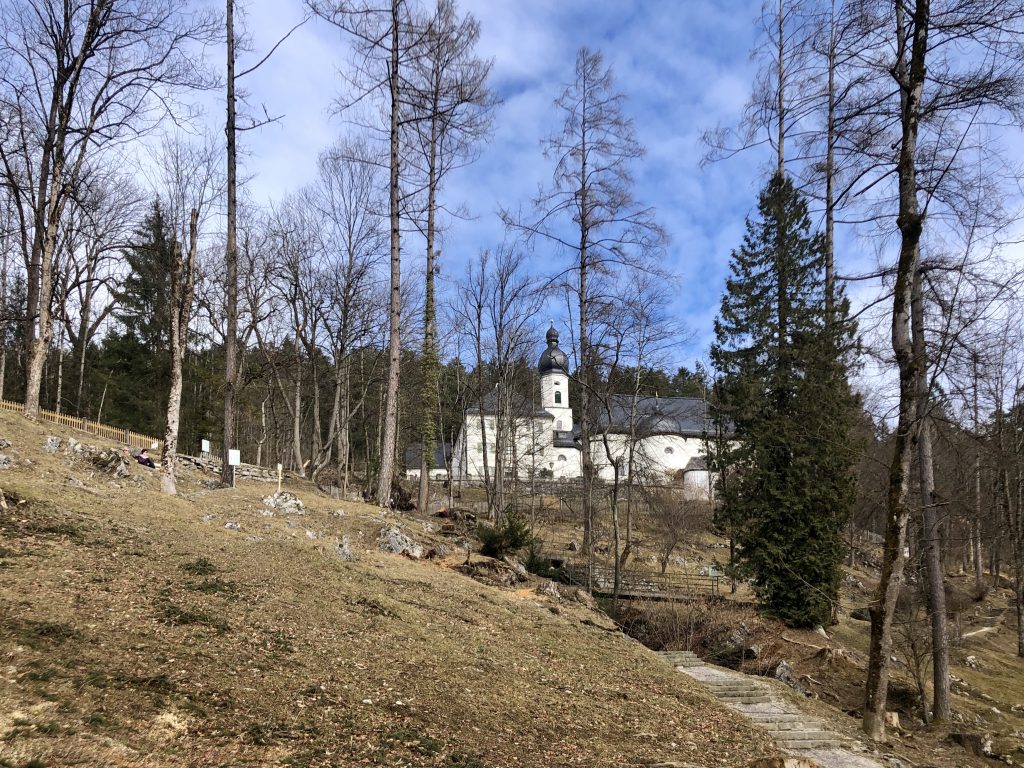
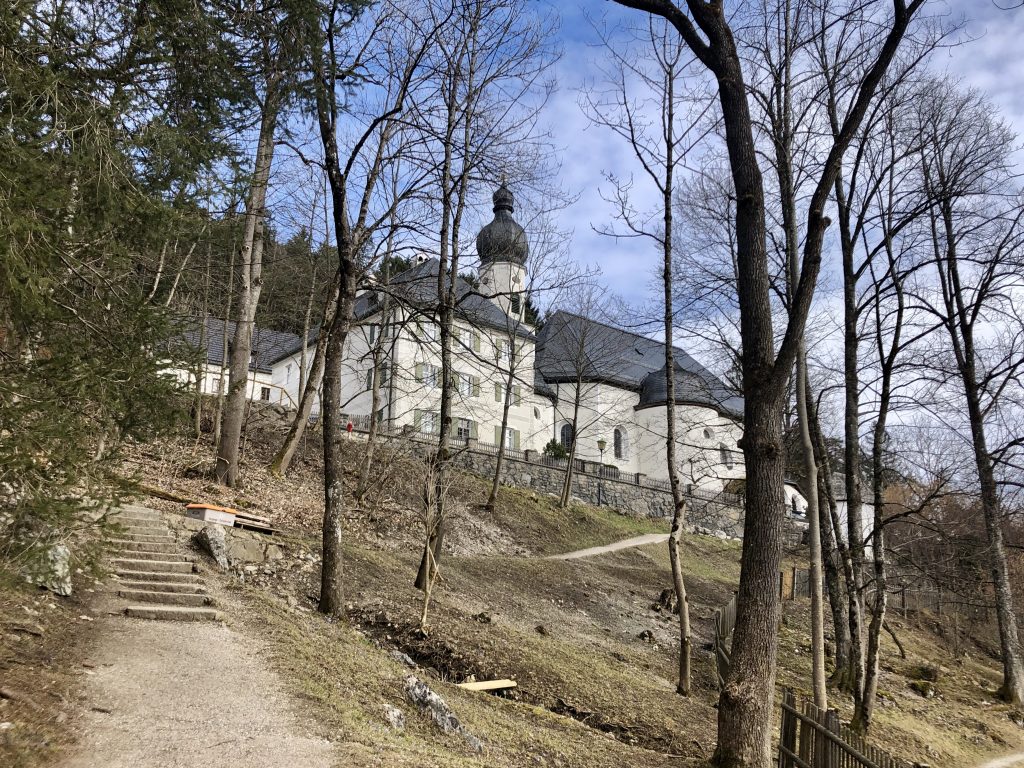
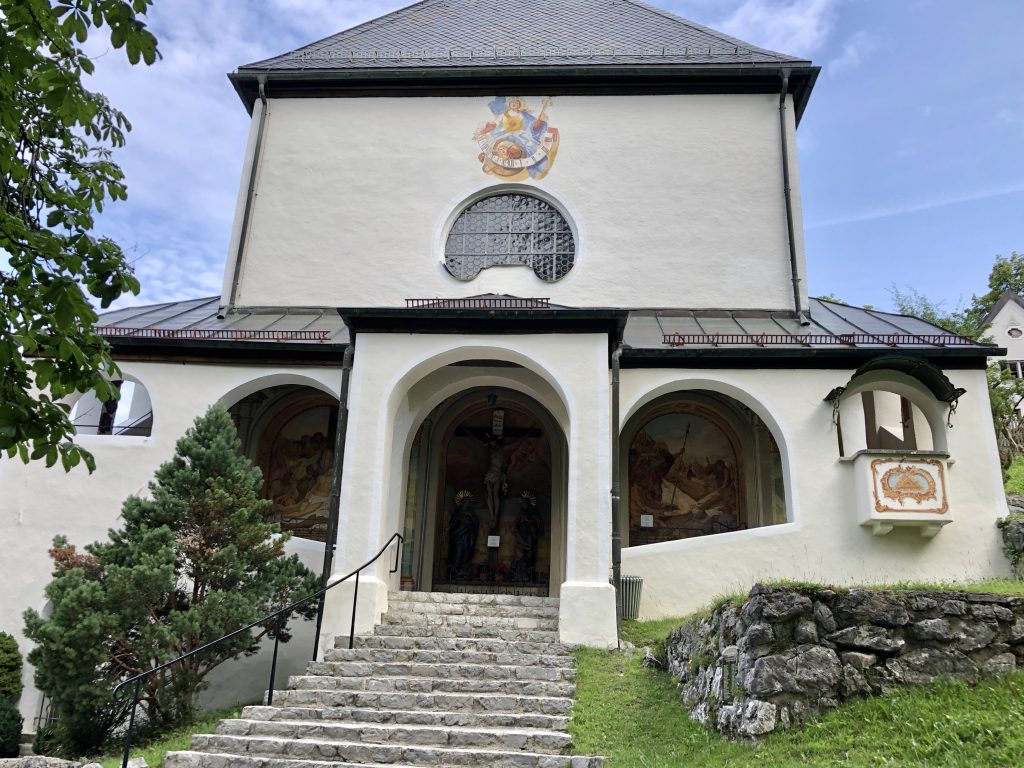
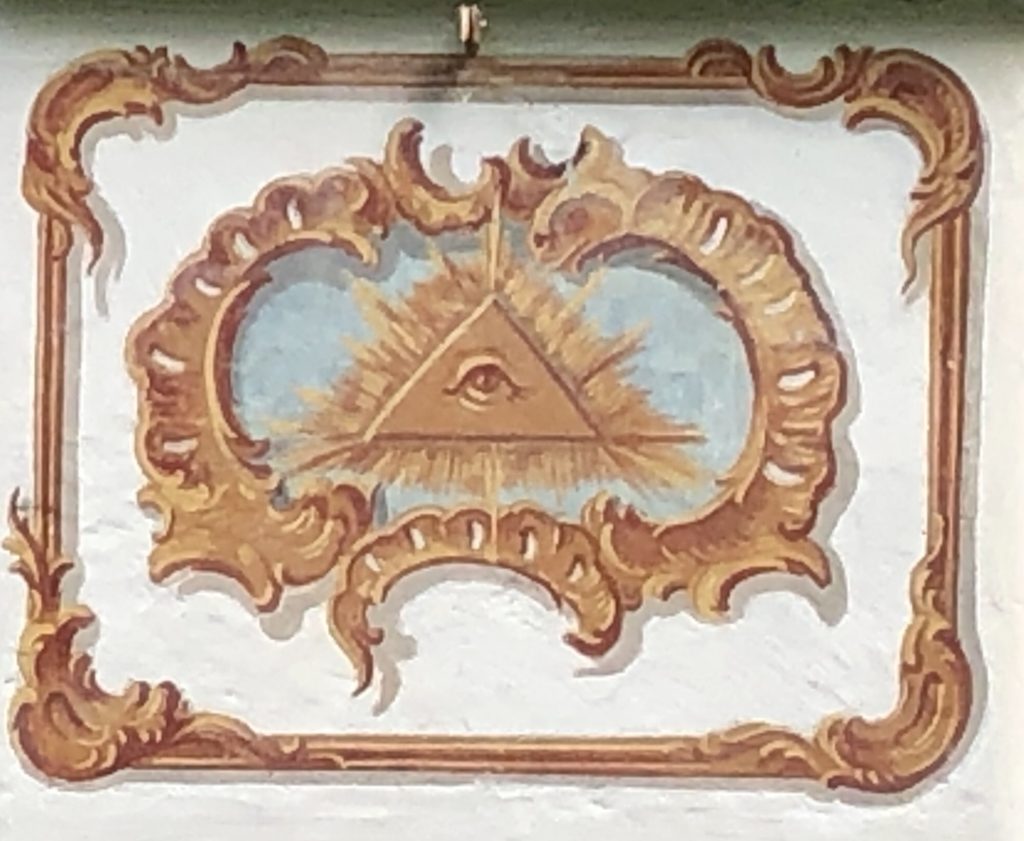
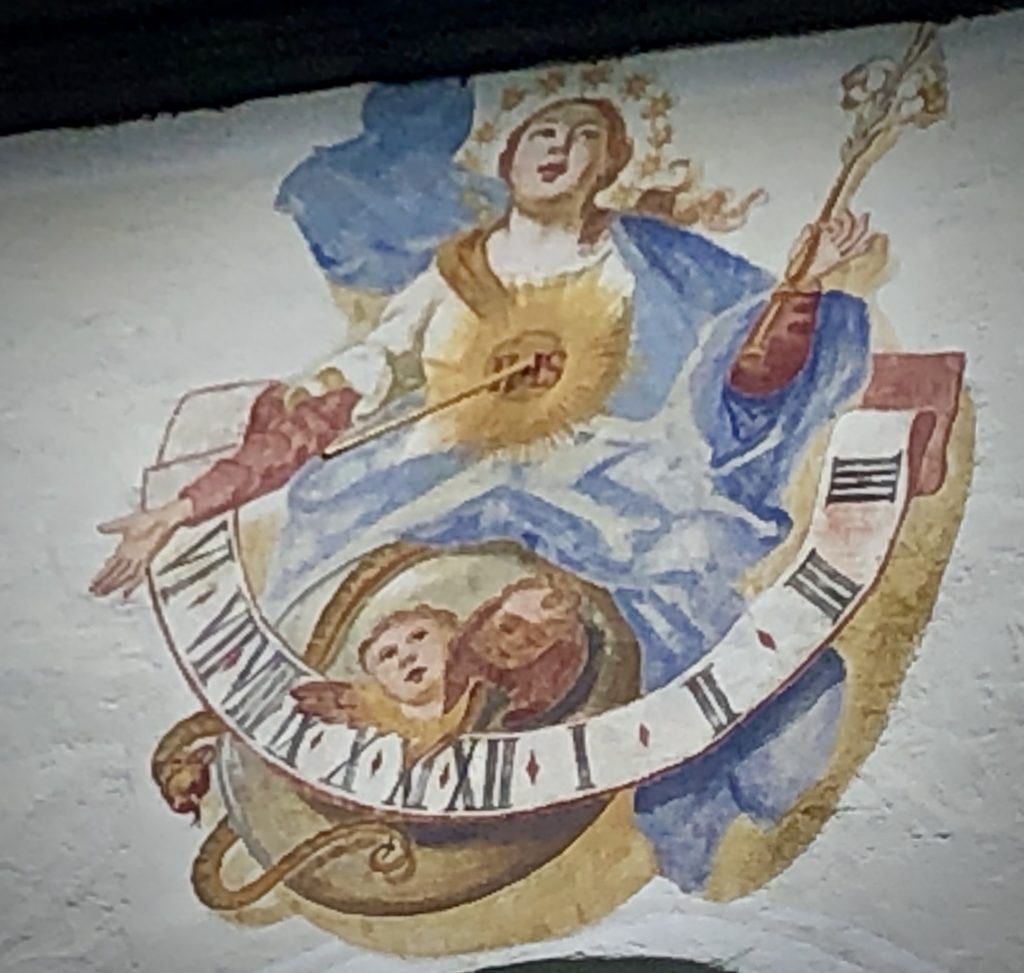

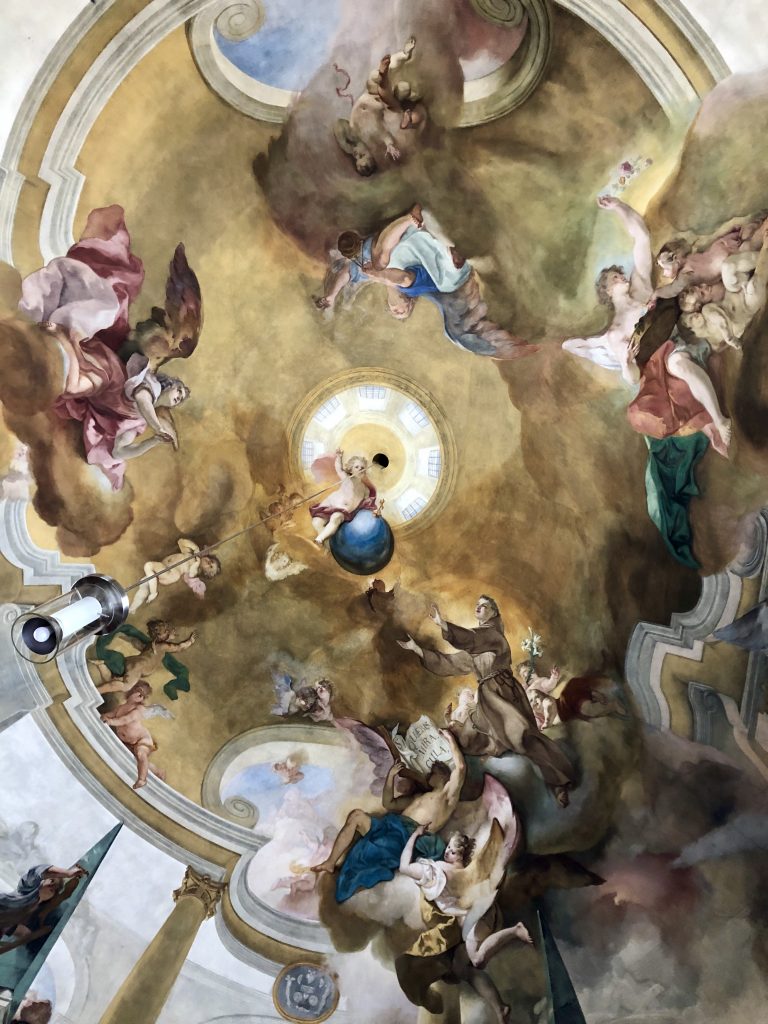
St.-Anton-Straße 4.
Sundial by Hülsmann.
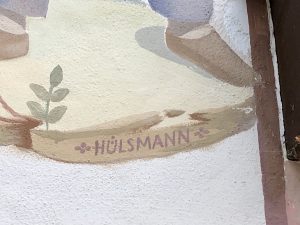
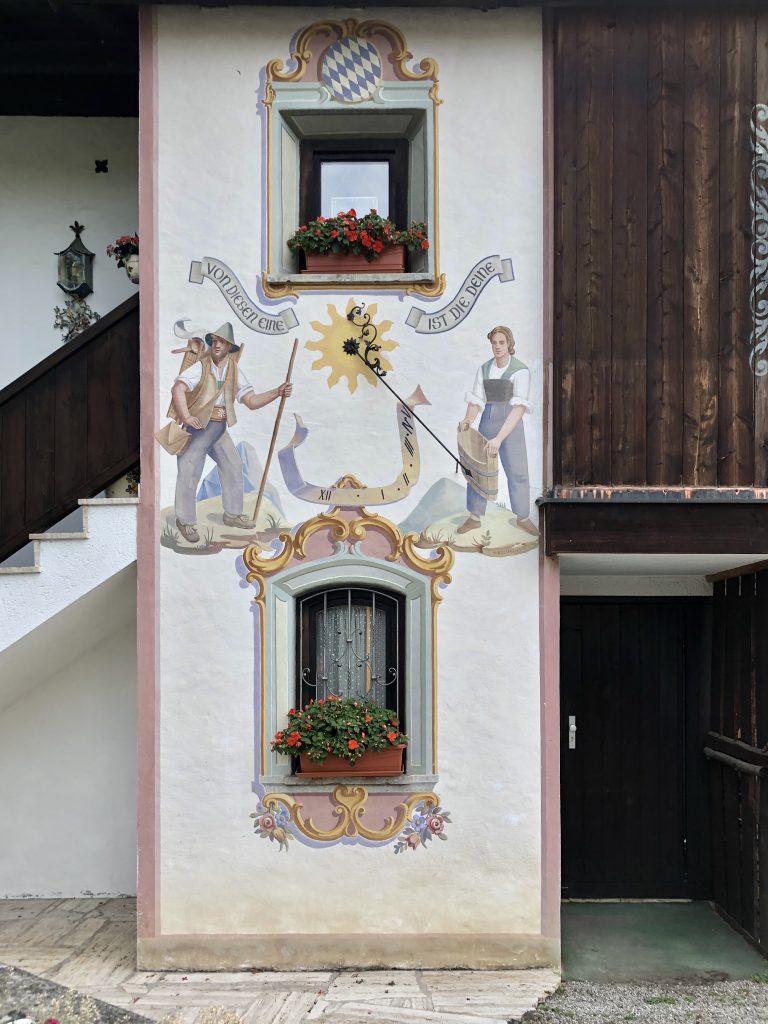
St.-Anton-Straße 10.

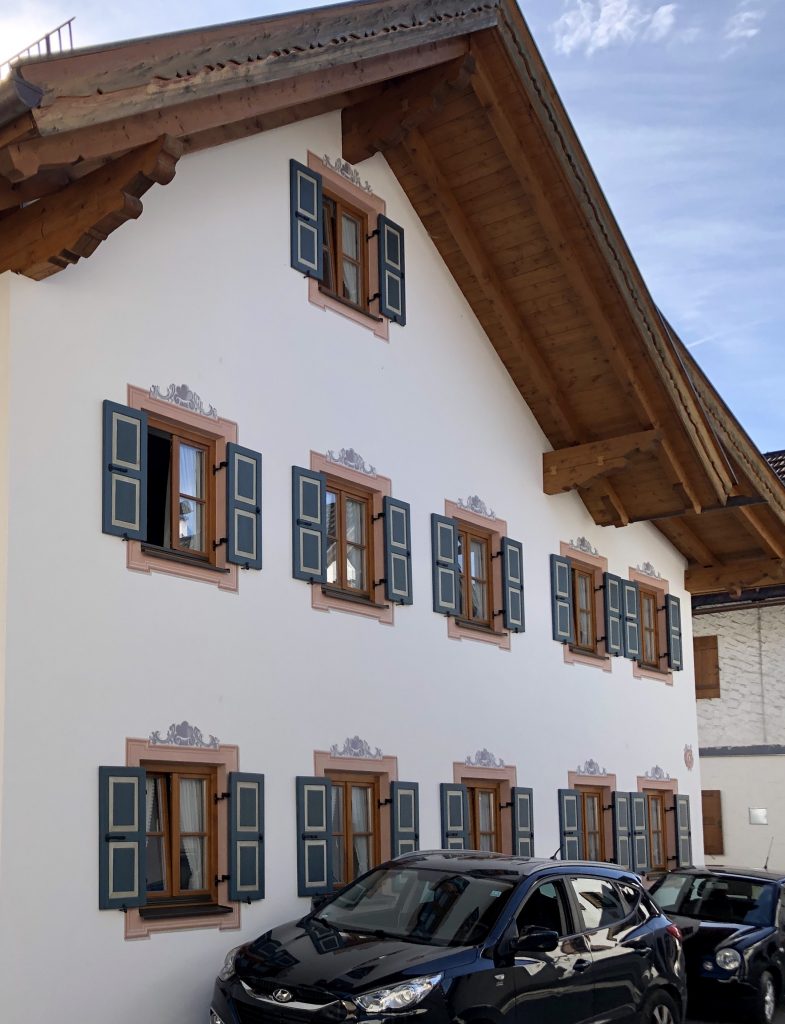
St.-Anton-Straße 15.
Saint George slaying a dragon by Winterholler, 1982.
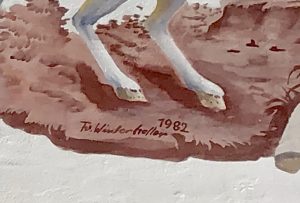
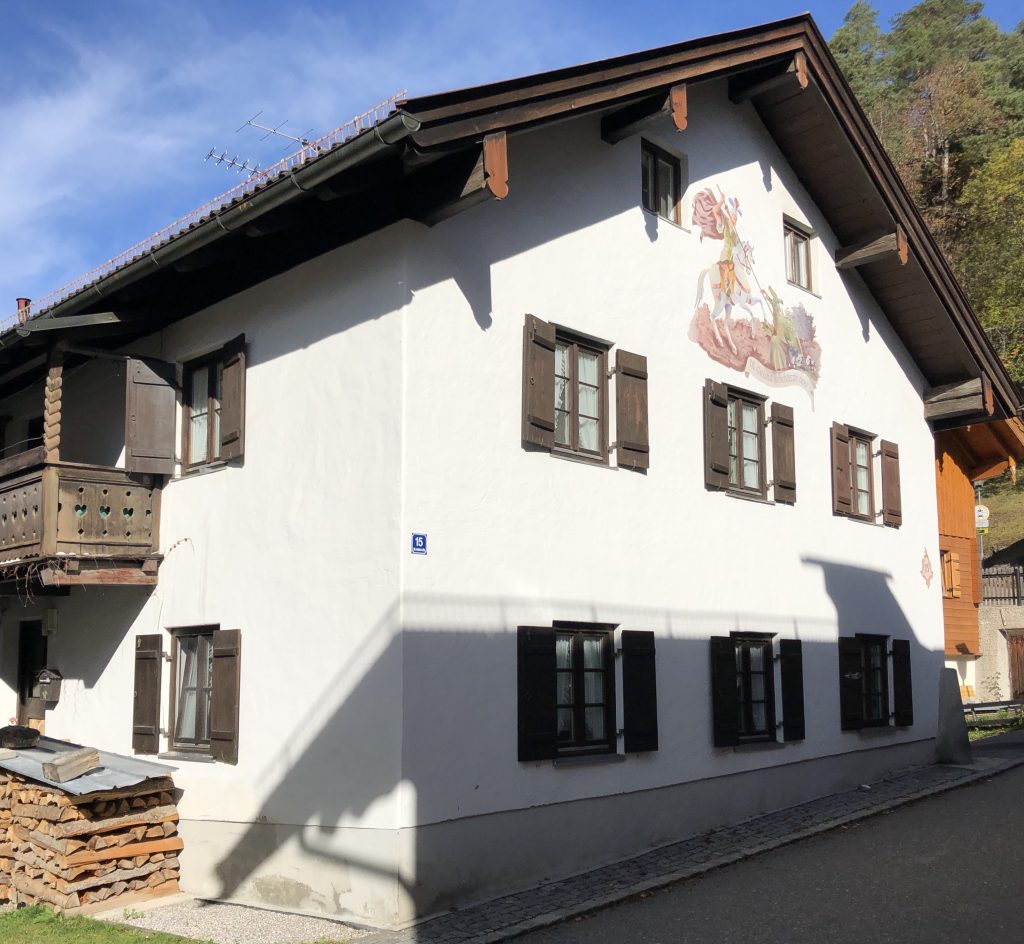
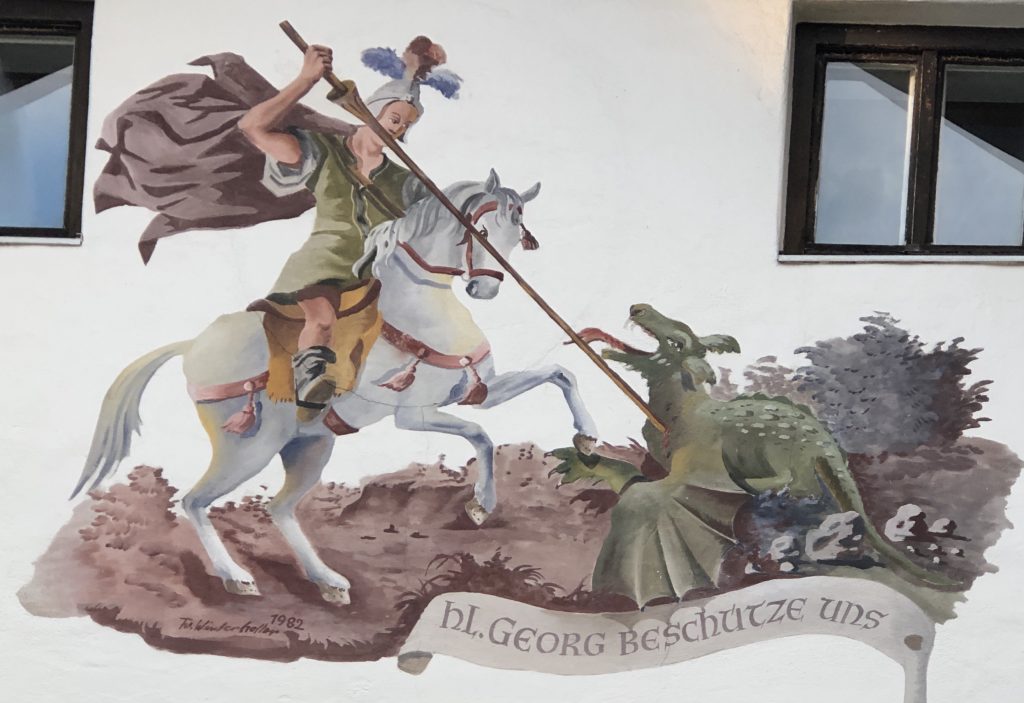
St.-Anton-Straße 18.
Ich leb’ und weiß nicht wie lang.
Ich sterb und weiß nicht wann.
Ich fahr und weiß nicht wohin.
Mich wundert’s, daß ich fröhlich bin.
I live and I don’t know how long.
I die and I don’t know when.
I drive and I don’t know where.
I’m surprised that I’m happy.
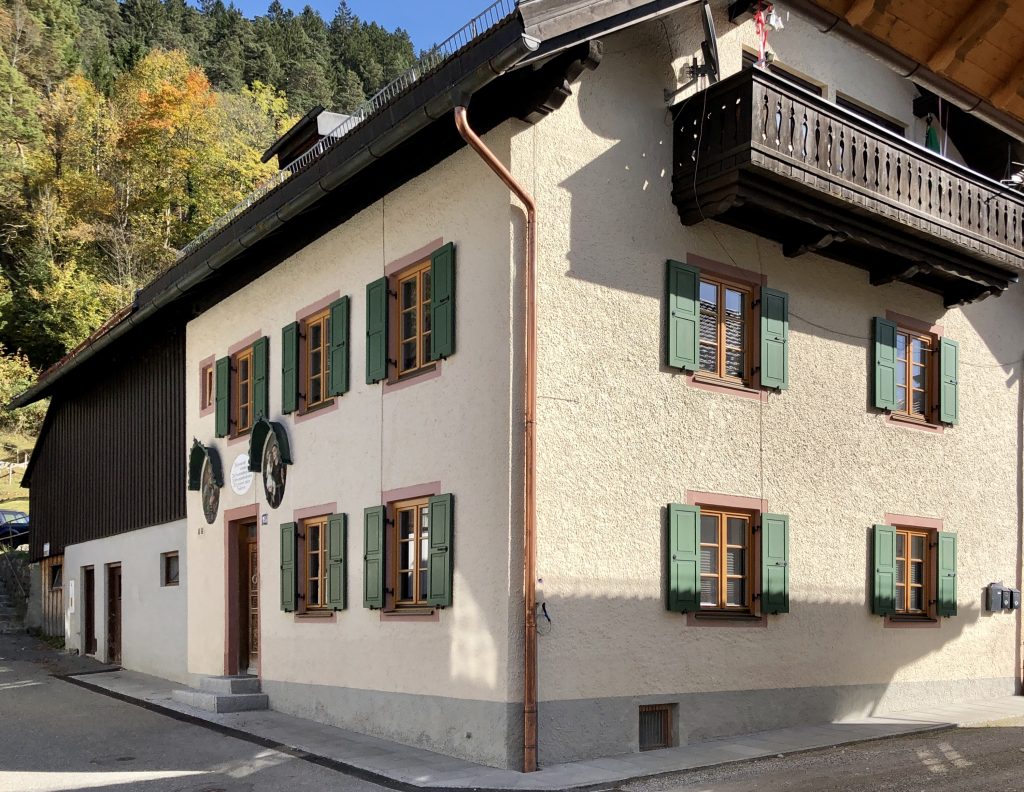
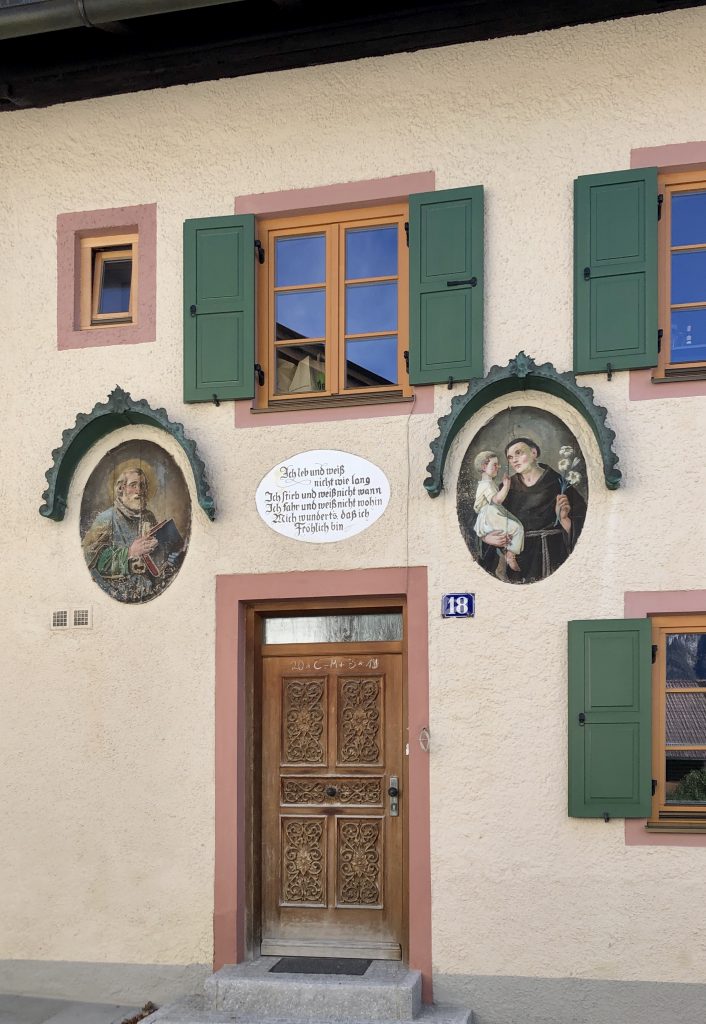
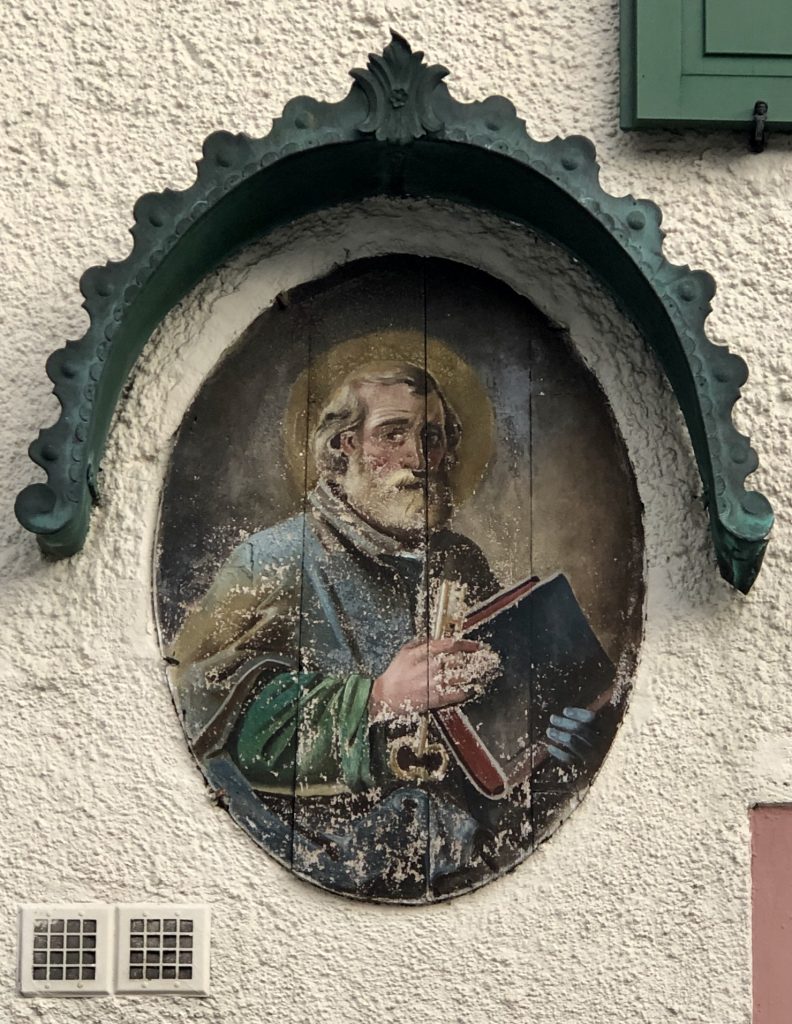
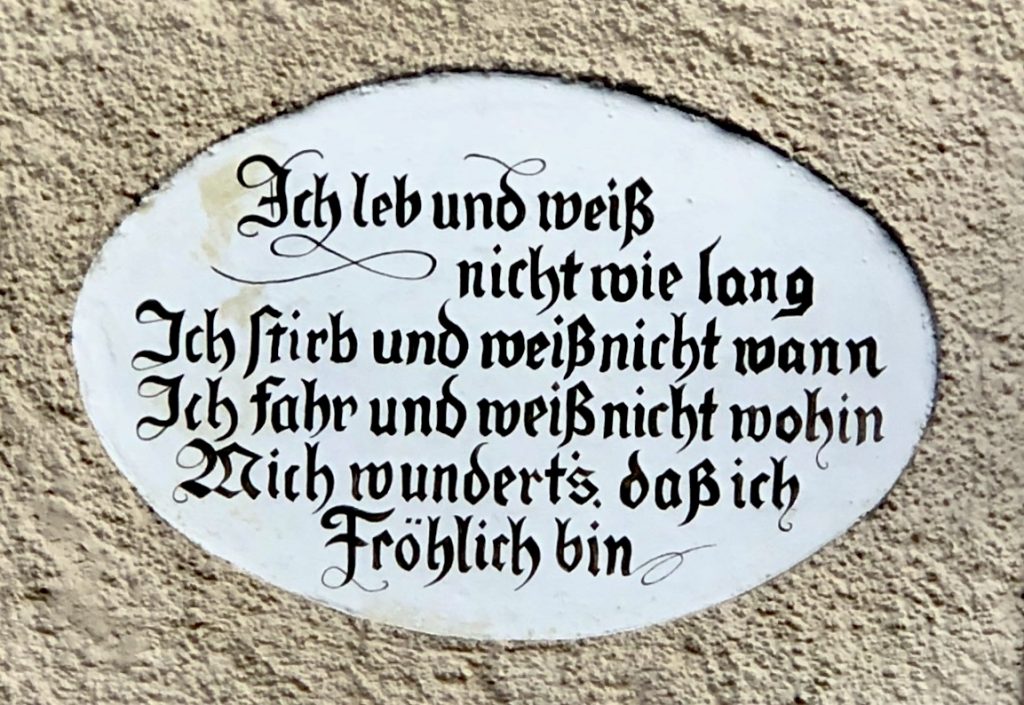
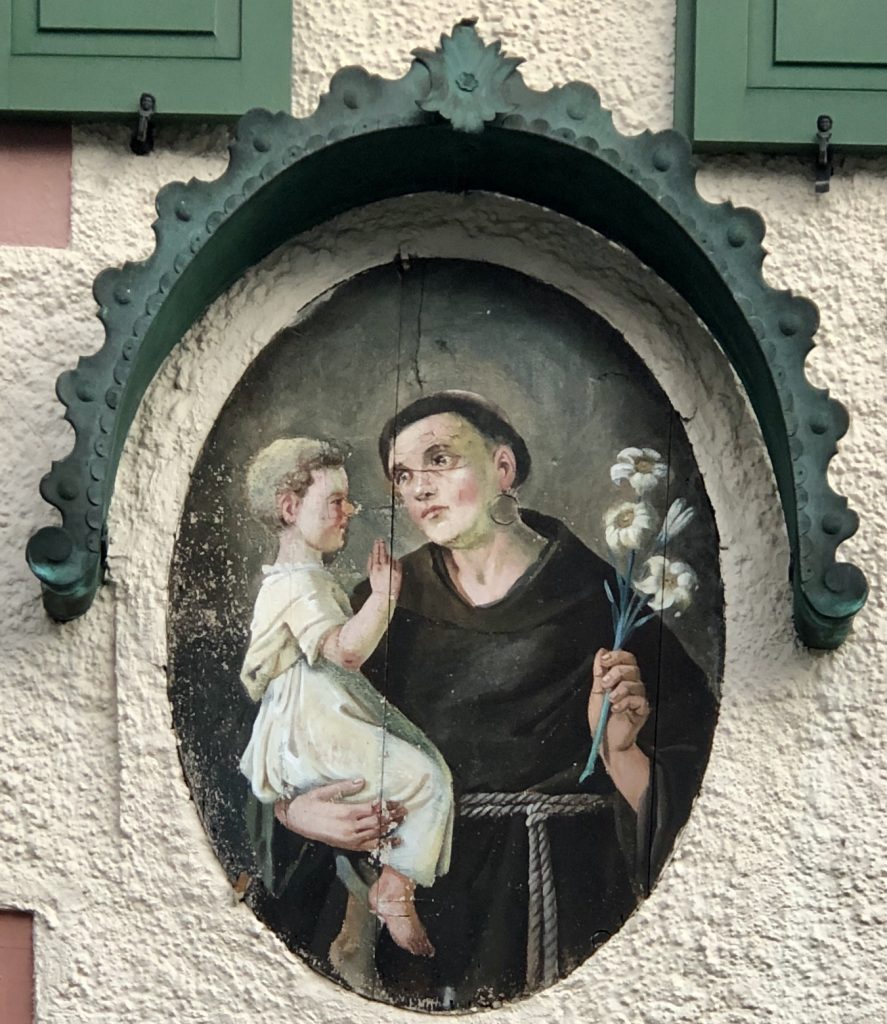
St.-Anton-Straße 20.
Saint Martin by Hülsmann.
